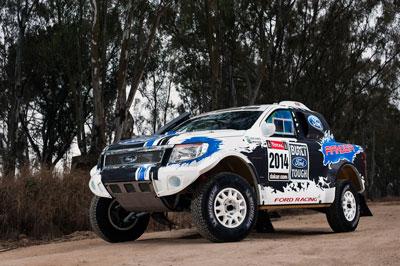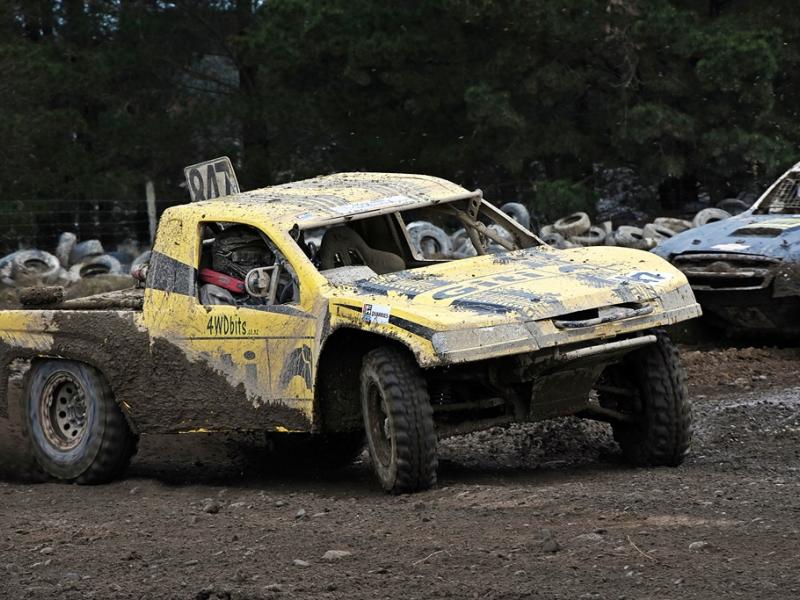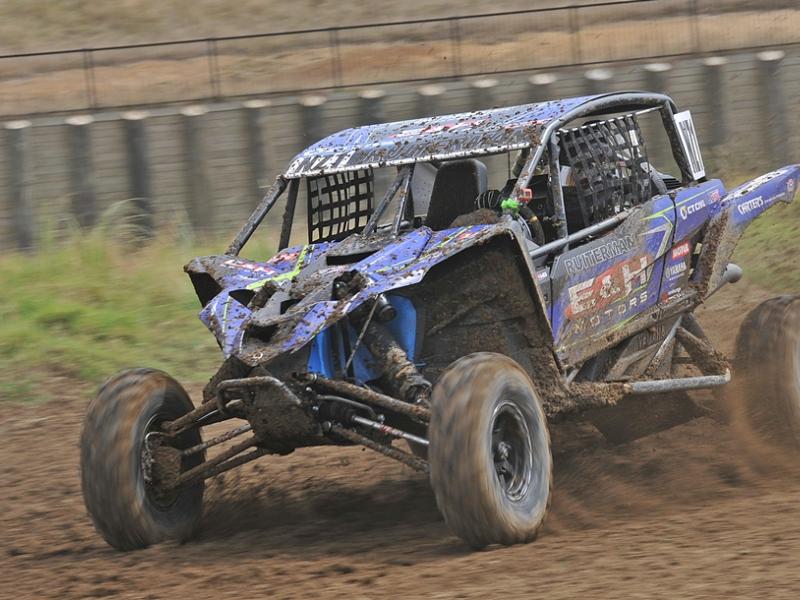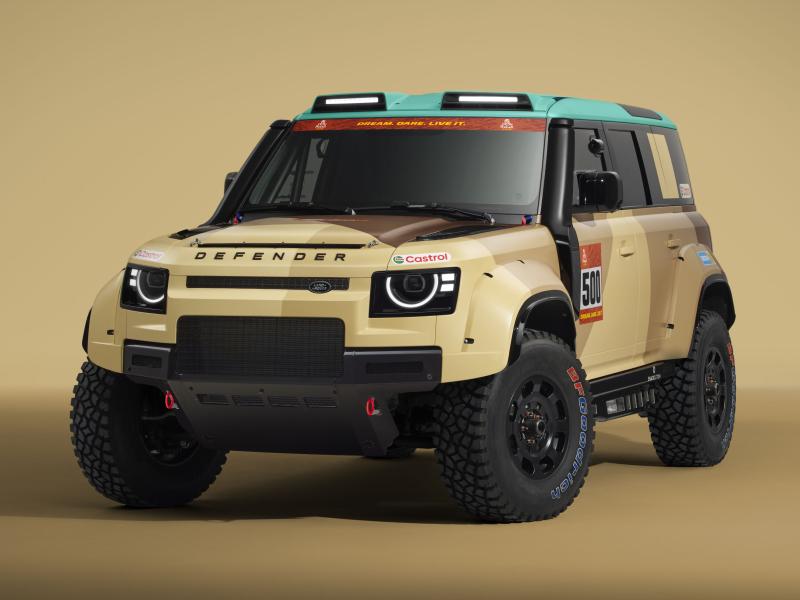Taking on the toughest off-road race in the world is no mean feat, but Ford Racing in South Africa has gone all out to produce what is sure to be one of the most competitive vehicles in Dakar Rally 2014, based on the latest Ford Ranger.
Produced by the team from Neil Woolridge Motorsport (NWM) in Pietermaritzburg, the Ford Racing Rangers have been designed, developed and built to the highest standards, using the most advanced materials and processes available.
At the core of the Ranger’s design and build is a sophisticated chassis jig, the only one of its kind in South Africa, and among a mere handful in the world.
“The chassis jig has taken the most time, required the most technical input and cost the most,” explains Neil Woolridge, head of NWM. “But it’s like building a house. If you don’t have the foundations right you can’t do the rest properly, so developing the best chassis manufacturing system has been a major focal point of the project from the outset.
“Every pipe is numbered with a unique part number, and each part is precisely laser cut to specification. With the jig in use and all of the specially designed locating brackets and frames in place, it’s basically like putting a jigsaw puzzle together.”
The innovative chassis jig was developed in-house by Neil Woolridge Motorsport using experience gained over many years of off-road racing, with support from Ford’s Special Vehicles Team (SVT) in Detroit and chassis specialists in Europe.
There is a lot more to the space frame-style chassis than just putting a puzzle together, including precision welding the hundreds of joints, followed by sandblasting, painting and assembly. But the roughly 1600 items that make up the chassis and sub-frames are built to a strictly defined formula that can be reliably replicated over and over again.
Compared to traditional chassis manufacturing techniques, this ensures a higher degree of accuracy, quality and, ultimately, reliability – core ingredients in the arduous world of cross country racing.
Each vehicle is supplied with a comprehensive bill of materials which shows each aspect of the vehicle in detail, including technical drawings that reflect every component’s part number so these can be easily referenced, repaired or replaced in the event of damage or accident.
Four Ford Racing Rangers have been produced on the chassis jig so far, including the two vehicles campaigned in the South African Cross Country Championship with great success since March. The Ranger won on its first outing and has finished on the podium in every race.
An all-new chassis can now be produced in approximately one month and NWM uses the best raw materials for the Ranger, including chrome moly tubing (or chromium molybdenum), along with Domex high-strength steel plate, all imported from Europe.
“There is very little mild steel used in the vehicle,” Woolridge points out. “We almost exclusively use aircraft-grade material, which has a much higher strength to weight ratio. A light and strong chassis and vehicle is the key to success in this sport.”
The Ford Racing Ranger has 4000 parts in total and all the design work was produced in-house by the NWM team, with the main responsibility falling on race engineer Bernd Wellman.
Due to the international scope and partners involved in the campaign, they use the latest CATIA software, an expensive but fully integrated suite of computer-aided design, engineering and manufacturing applications – as utilised by the leading vehicle and component manufacturers.
“This high-tech software is also an essential part of the project that we had to teach ourselves,” Woolridge says. “Bernd has done really well figuring it out largely by himself, and designing every single one of the components on the Ford Racing Ranger.”
A key element of the build of the Dakar vehicles is not only the two racing Rangers, but also the mountain of spares the team has to manufacture and haul along – especially considering the punishment the vehicles will take over two incredibly tough weeks, covering some 8500km over challenging and ever-changing terrain through Argentina, Bolivia and Chile.
“Being our first Dakar with this vehicle it’s difficult to predict how many spares we will need, but I believe we’ll be well prepared,” Woolridge says. “We have a lot of experience in the team and know the vehicle really well after nearly a full season in the South African championship.”
According to Woolridge, the focus is building a solid pace in the first six days of the race, and conducting the essential daily repairs and maintenance on the two Rangers. However, on the rest day on 11 January the vehicles will be completely stripped down and everything but the chassis and engine will be replaced – thus setting the crews up for the tough final seven days through to the finish in Valparaiso, Chile, on 18 January.
It is the first time this new Ford Racing team will be working together, comprising the established 13-man crew from Neil Woolridge Motorsport, along with a select group of hand-picked race engineers, car chiefs and mechanics from Europe – many of them with years of international experience in the Dakar Rally and World Rally Championship. In total the team will comprise around 30 people, including the support, medical and logistics staff, and management.
Over the past couple of months, most of the engineers and mechanics have spent a lot of time together in the frenetic build-up to the Dakar Rally send-off, assisting with the September test session in Namibia with the first Dakar Ranger, refining the design and fast-tracking the build of the second Ranger at the NWM workshop.
At the same time, logistics manager Scott Abraham, who heads up South Racing in Germany, is currently preparing the race truck that follows the Dakar Rally route with essential spares, along with the two massive 6x6 support trucks that carry all the rest of the team’s equipment.
The deadlines are approaching fast, with the European-based equipment and vehicles being loaded on the special Dakar Rally ship that leaves Le Havre in France at the end of November, and the two Rangers and spares being flown from South Africa to Argentina in the middle of December for the start in Rosario on 5 January.
“It’s a very busy time for the team, but the motivation is at an all-time high,” says Woolridge. “It has always been our dream to go to Dakar, and very soon that dream will come true.”







